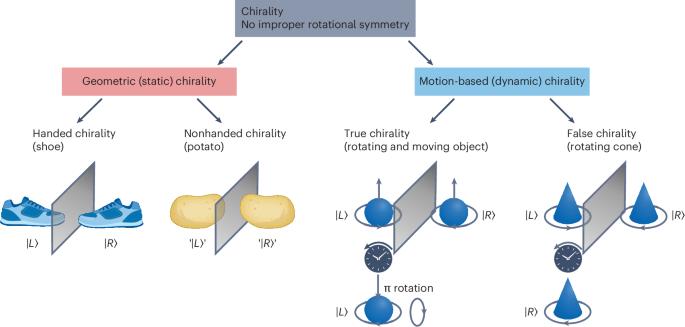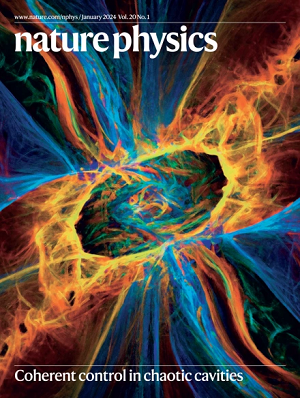Chiral phonons
IF 18.4
1区 物理与天体物理
Q1 PHYSICS, MULTIDISCIPLINARY
引用次数: 0
Abstract
A rapidly increasing body of work reporting phenomena associated with lattice vibrations carrying angular momentum has led to the emergence of the field of chiral phonons. Some of these properties, such as the phonon magnetic moment, also occur in achiral phonons that are circularly or elliptically polarized, while the presence of chirality has additional implications for the types of interaction allowed between the phonons and light, electrons and other quasiparticles. In this Perspective we introduce a framework for classifying phonons with angular momentum, and provide illustrations of the different types using examples from the recent literature. Specifically, we suggest the term ‘axial phonon’ to encompass all phonons that carry angular momentum, real or pseudo, and reserve the term ‘chiral phonon’ for those phonons that break improper rotational symmetry. We hope that this scheme provides clarification on the matter of phonon chirality and will serve as a guide for future research. Phonons are quanta of the vibrations of the lattice in solids. They can carry angular momentum and allow an emergent chirality. This Perspective defines various types of chiral phonon and classifies the previously observed manifestations of them.

手性声子
随着携带角动量的晶格振动相关现象的报道越来越多,导致了手性声子领域的出现。其中一些性质,如声子磁矩,也发生在圆形或椭圆极化的非手性声子中,而手性的存在对声子与光、电子和其他准粒子之间的相互作用类型有额外的含义。在这方面,我们介绍了一个框架,分类声子角动量,并提供了不同类型的插图,从最近的文献中使用的例子。具体来说,我们建议使用“轴向声子”一词来涵盖所有携带角动量的声子,无论是真声子还是伪声子,并为那些打破不适当旋转对称的声子保留“手性声子”一词。我们希望这一方案能够澄清声子手性的问题,并将为今后的研究提供指导。声子是固体中晶格振动的量子。它们可以携带角动量并允许出现手性。本观点定义了手性声子的各种类型,并对以往观察到的表现进行了分类。
本文章由计算机程序翻译,如有差异,请以英文原文为准。
求助全文
约1分钟内获得全文
求助全文
来源期刊

Nature Physics
物理-物理:综合
CiteScore
30.40
自引率
2.00%
发文量
349
审稿时长
4-8 weeks
期刊介绍:
Nature Physics is dedicated to publishing top-tier original research in physics with a fair and rigorous review process. It provides high visibility and access to a broad readership, maintaining high standards in copy editing and production, ensuring rapid publication, and maintaining independence from academic societies and other vested interests.
The journal presents two main research paper formats: Letters and Articles. Alongside primary research, Nature Physics serves as a central source for valuable information within the physics community through Review Articles, News & Views, Research Highlights covering crucial developments across the physics literature, Commentaries, Book Reviews, and Correspondence.
 求助内容:
求助内容: 应助结果提醒方式:
应助结果提醒方式:


